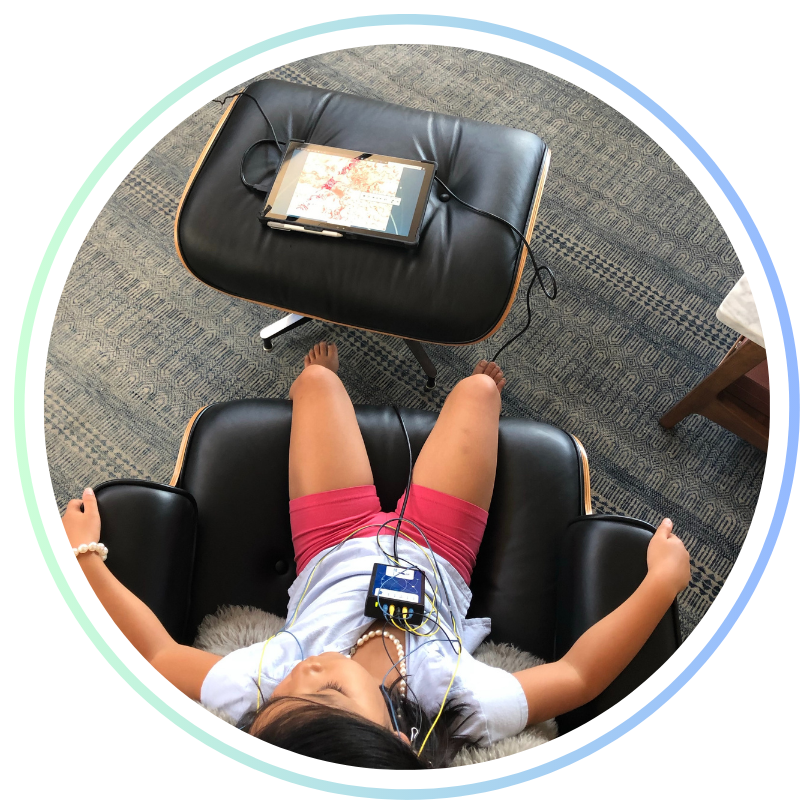OUR NEUROFEEDBACK PROGRAM
Every Child Deserves to Thrive
Enhance School Performance & Emotional Regulation
Program overview
We are experts in personalized home neurotherapy programs. Built with families in mind!
-
Age appropriate
Non-invasive neurofeedback that can be done at any age.
-
No side effects
In general, neurofeedback is considered to be a non-invasive intervention.
-
Insurance
Coverage varies by insurance plan and location.
-
No interference
Yes, you can stay on medication while doing neurofeedback.
-
Research-based
Neurofeedback research for ADHD has been conducted since the 1970s.
-
Home neurotherapy
Professional-grade neurofeedback program designed for home use.
Program Steps
-
Discover the Magic: Watch our webinars and learn from experts how neurofeedback can transform your child's life.
-
Get Personal Guidance: Book a heart-to-heart consultation to explore our home neurofeedback program.
-
Begin the Journey: Sign up for our home rental program and welcome a new beginning.
-
Witness the Change: Experience neurofeedback at home and celebrate every positive shift in your child's wellbeing.
Expert-Led
-
Master's Level Certified Trainers
-
More than 12 years of serving individuals and families
-
More than 20 years in the field of mental health

.png?width=810&height=810&name=children%20neurofeedback%20training%20holistichealthybrain%20website%20(1).png)
What is ADHD?
ADHD is a common neuro-developmental disorder in children, affecting millions globally. It can be a chronic condition that may persist into adulthood. ADHD is primarily characterized by difficulty in sustaining attention, hyperactivity, and impulsive behavior. The symptoms may surface as early as the age of 3 and can vary in severity.
Children with ADHD frequently face challenges such as low self-esteem, relationship issues, and academic underachievement that is why it is important to know the signs of ADHD and to seek help from professionals.
What is neurofeedback?
Neurofeedback, or neurotherapy, is a therapeutic intervention that uses real-time displays of brain activity to teach self-regulation of brain function. Many symptoms of mental health conditions have maladaptive brain activity and neurofeedback is designed to help the brain reset.
How does neurofeedback work for ADHD?
It provides immediate feedback from a computer-based program that assesses a client's brainwave patterns by having EEG sensors on the head and then giving precise feedback about what brain waves are maladaptive. The design is through feedback the brain can reset to brainwave patterns for focus, attention and calm.

Is neurofeedback or neurotherapy effective for treating ADHD?
Neurofeedback research for ADHD has been conducted since the 1970s. Research conclusions are mixed. Our anecdotal observations over 12 years are that it is an important support for ADHD. For parents who do not want to start with medication we recommend three months of neurofeedback to assess how much change happens with the neurotherapy alone, then adding medication and ADHD coaching as needed.
How do you get the best results from neurofeedback?
We always recommend a holistic approach, combining a good whole-foods based diet with less processed foods and sugar, regular exercise and 9-10 hours of sleep per night. Neurofeedback helps to optimize brain functioning and creates a good foundation to then add ADHD executive functioning coaching and medication as needed. We also see the best results in children when one caregiver also does neurofeedback. Nervous systems are connected, when the parent’s brain is also optimizing its functioning and lowering stress, it supports the child’s brain regulation.
What age groups can benefit from neurofeedback for ADHD?
Neurofeedback for ADHD can be done at any age. And with the neurofeedback devices that are non-invasive, children as young as two-years-old can safely do sessions. We use NeurOptimal neurofeedback, which is safe to use at any age.
Are there any side effects of neurofeedback?
In general, neurofeedback is considered to be a non-invasive procedure with minimal side effects. Protocol neurofeedback, where the trainer has to set protocols based on a QEEG brain map, can have temporary side effects from over-training brain regions. These symptoms, such as drowsiness or being overly alert, usually last less than a few days.
How many sessions of neurofeedback are needed for ADHD?
This varies by individual and the type of neurofeedback. Typically we see children in neurotherapy for 6 months of 1-2 sessions weekly in-office, or three months of 3-4 sessions weekly of at home neurofeedback.
With any form of brain training, the number of sessions as well as the timespan of training is meaningful. For example, the brain takes weeks to create new neural connections. Health of the individual also plays a role in the number of sessions needed.
Is neurofeedback covered by insurance
Coverage varies by insurance plan and location.
Can someone stay on medication and do neurofeedback?
Yes, you can stay on medication while doing neurofeedback. We recommend clients already on medication to stay on their current dosage and as improvements are seen and stabilized, to work with their prescribing physician to taper off medication. Individuals should always discuss changes with their provider before decreasing their medication.
.png?width=420&height=180&name=holistic-healthy-brain-logo-website-with-tagline-transparent%20(3).png)